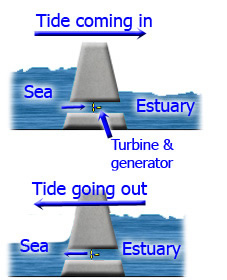 |
| Picture by Andrea Zepeilli |
Over the past weeks we have explored the range of alternative energy technologies that policy makers can adopt to lower greenhouse gas emissions. These technologies would also have to be complemented with effective climate-friendly policies to be undertaken by country governments committed to solving the climate change issue.
The Economist in Jun 2013 reported on some of the key policy decisions undertaken by countries to help combat climate change. China, which is the world's top greenhouse gas emitter, initiated a carbon-trading scheme in Shenzhen. The United States, which is the second largest emitter of CO2 (US Department of Energy, 2008) was reported by the Washington Post to have tightend pollution limits for gas-fired power plants and coal-fired power plants.
While some countries have reported positive steps towards CO2 emissions reduction, others have however downplayed the climate change issue. The New Scientist reported in Sep 2013 that following Australia's formation of a new government, it has abolished its emissions trading scheme, disbanded a climate advisory body and has a policy of a relatively low 5% CO2 reduction emission target.
The United Kingdom's energy policy focuses on the two key areas of climate change mitigation and energy security (Rogers-Hayden et al, 2013) . This has led to the UK government's support to construct more nuclear power plants for its future energy mix. On this aspect, Bang (2010) opined that climate change and energy security exhibit synergies that could help alleviate the climate change problem. Energy security has high relevance and immediate economic effects, which could help pull the climate change issue along as a matter of priority for policymakers. Meanwhile, countries like Russia may see less linakages between energy security and climate change as it is not reliant on gas imports (Sharples, 2013)
The United Kingdom's energy policy focuses on the two key areas of climate change mitigation and energy security (Rogers-Hayden et al, 2013) . This has led to the UK government's support to construct more nuclear power plants for its future energy mix. On this aspect, Bang (2010) opined that climate change and energy security exhibit synergies that could help alleviate the climate change problem. Energy security has high relevance and immediate economic effects, which could help pull the climate change issue along as a matter of priority for policymakers. Meanwhile, countries like Russia may see less linakages between energy security and climate change as it is not reliant on gas imports (Sharples, 2013)

























